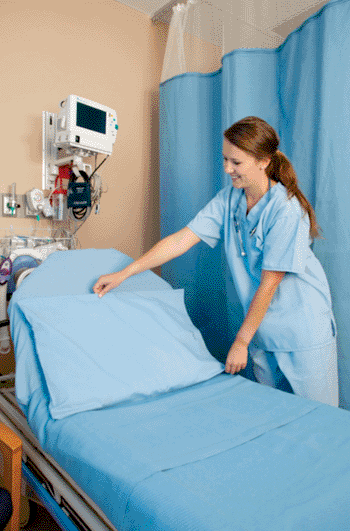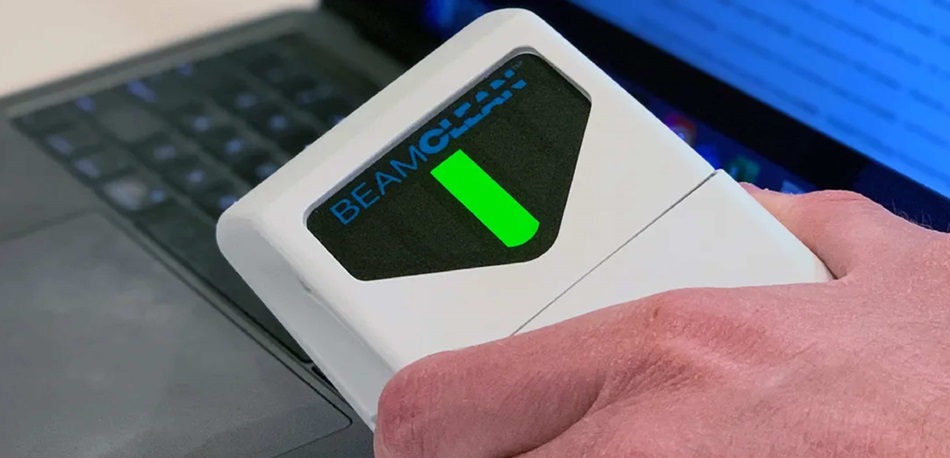Innovative Hospital Privacy Curtains Resist Superbug Contamination
By HospiMedica International staff writers
Posted on 13 Nov 2012
Hospital privacy curtains embedded with an experimental antimicrobial technology may play a role in decreasing transmission of healthcare associated pathogens. Posted on 13 Nov 2012
Researchers at the University of Iowa (Iowa City, USA) conducted a randomized, controlled trial to assess the effectiveness in a clinical setting of curtains incorporating a complex element compound (CEC) with antimicrobial properties. Twenty-one rooms in a surgical intensive care unit (ICU) and 9 rooms in a medical ICU were randomly selected to receive either a new standard curtain or a new identical-looking PurThread Technologies (Princeton, NJ, USA) CEC curtain; in all, 15 rooms received CEC curtains and 15 received standard curtains.

Image: The PurThread Technologies CEC privacy curtain (Photo courtesy of PurThread Technologies).
Cultures were performed of samples that were collected from the curtains twice a week for 23 days. Contamination was determined according to standard microbiologic methods, as were time to contamination, and incidence rates of contamination. The results showed that the standard control curtains were eight times more likely to be contaminated with the superbug vancomycin resistant Enterococcus (VRE) than experimental CEC curtains, which only had one positive VRE culture during the entire study.
Additionally, the median time to first contamination of the PurThread curtains took seven times longer than control curtains. On average it took only two days for control curtains to become contaminated with potentially pathogenic bacteria, while PurThread curtains withstood contamination an average of 14 days. The study was published in the November 2012 issue of Infection Control and Hospital Epidemiology.
“The contamination variation, in this study, between PurThread experimental curtains and control curtains shows the antimicrobial materials being developed by PurThread can have a measurable and meaningful impact in a clinical setting,” said Kathryn Bowsher , VP of Clinical and Regulatory Strategy at PurThread Technologies. “This study strengthens our efforts to develop medical textiles that reduce bioburden contamination and contribute to a more hygienic patient environment.”
Studies have shown that 92% of hospital privacy curtains are contaminated with potentially dangerous bacteria such as methicillin-resistant Staphylococcus aureus (MRSA) and VRE within one week of being laundered. Privacy curtains are frequently touched by the freshly washed hands of healthcare workers before touching patients, and they often hang in place for weeks or months without being changed. Bacterial transfer from curtains to healthcare worker gloves is common, and is one of the reasons hands are considered leading vectors of pathogens from staff to patients.
Related Links:
University of Iowa
PurThread Technologies














